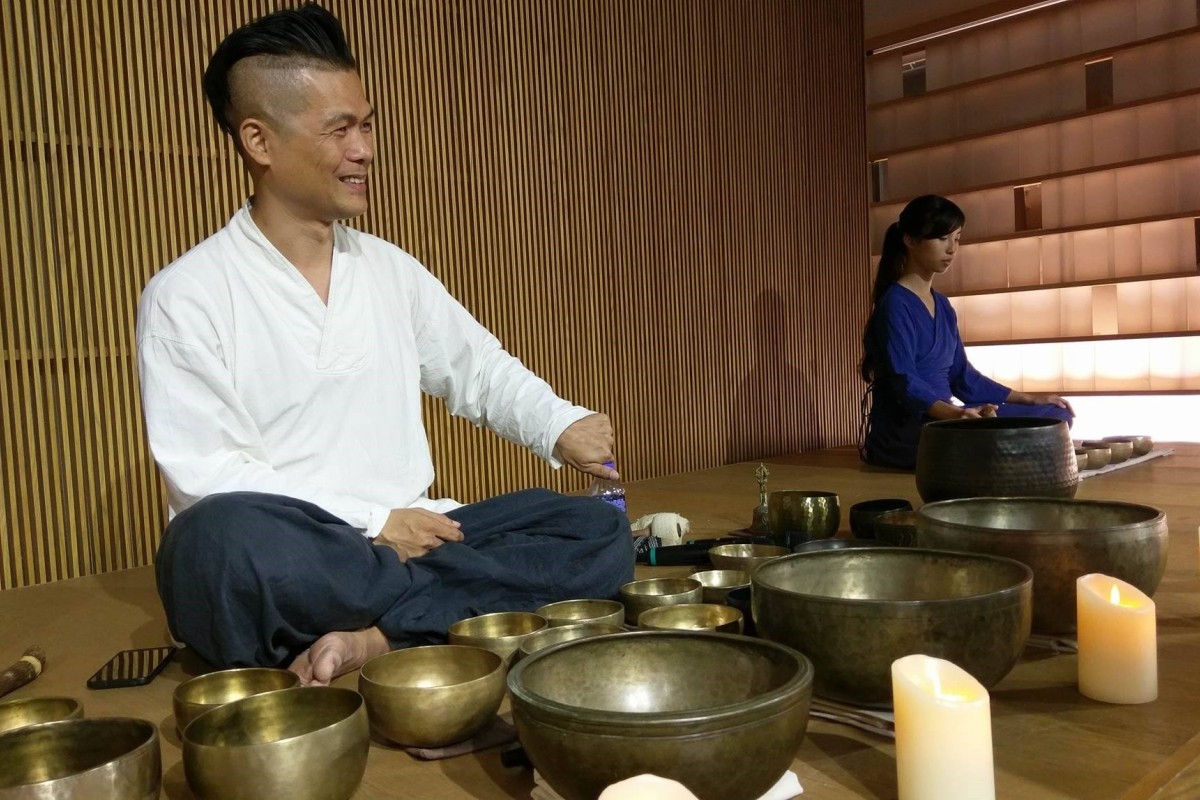
How a singing bowl helped one JR find calm, relaxation and a peace of mind
Music has an added benefit: it can alter our mood. But some instruments are designed specifically for that purpose. We went on a “sound journey” to find out if sounds and their vibrations really can help us relax

 Instructor Tsang Man-tung (left) plays singing bowls.
Instructor Tsang Man-tung (left) plays singing bowls. School, homework, sleep, repeat. Most of us are familiar with that routine. We know that it’s important to take time out to relax, but with so much always going on, it can be hard to switch off our brains.
One solution is to get back in touch with our bodies. The Hong Kong Dance Company’s “Singing bowl sound journey” workshop helps people do just that – as Young Post discovered earlier this month.
The first exercise involved Tibetan singing bowl. This is a musical instrument consisting of a metal bowl and a wooden or leather-wrapped mallet. The performer hits the rim of the bowl with the mallet, producing a bell-like sound. The vibrations created by the sound are thought to help ease tension. Different-sized bowls create different frequencies, which adds to our relaxation.
Instructor Tsang Man-tung guided the class through a series of movements designed to help us become more aware of their own senses. We began with some deep breathing, which was so slow and controlled that it initially felt a bit suffocating. But after a moment or two, it did help us to loosen up.
Once we were a little more relaxed, we were instructed to concentrate on what was happening in our bodies, such as our heartbeats slowing down, our spines straightening, and the warmth of our hands.The idea was to focus on the parts of our body we usually neglect.
The next stage of the “sound journey” involved the use of a musical instrument called a Shruti box. Those who practise yoga or meditation are likely familiar with the mantra “Om” – a Shruti box can produce a similar sound. Tsang told us to say “Om” at the same time as he played the Shruti box, and this was where the magic happened. Tsang explained that the combination of sounds created a kind of resonance effect: this is when the natural vibration frequency of the body is magnified by the vibrations of something else. In this case, the vibration frequency of the Shruti box was the same as the “Om” sound. It was quite a novel sensation.
The final part of the workshop was the most relaxing – perhaps too relaxing for some, who didn’t manage to stay awake. We lay down on the floor while listening to the singing bowls once again, and although the activity was not designed to send people to sleep, more than a few nodded off. The actual purpose of the activity was to focus on visualisation. People felt a range of sensations; some said that they could see colours or even a river while listening to the singing bowls.
Finally, Tsang asked us to think of a single Chinese character – whatever popped into our heads – focus on it, and try to understand its meaning. The word could represent a feeling, a memory or your own identity. It depended entirely on your interpretation.
While some of the concepts discussed were a bit abstract, you really don’t need to understand them all to feel the benefits. The lessons we learned should help us feel more chilled out and regenerated than an ordinary nap, even without the instruments.
Next time you’re feeling stressed, why not switch off your brain and switch on your senses?
Edited by Charlotte Ames-Ettridge
